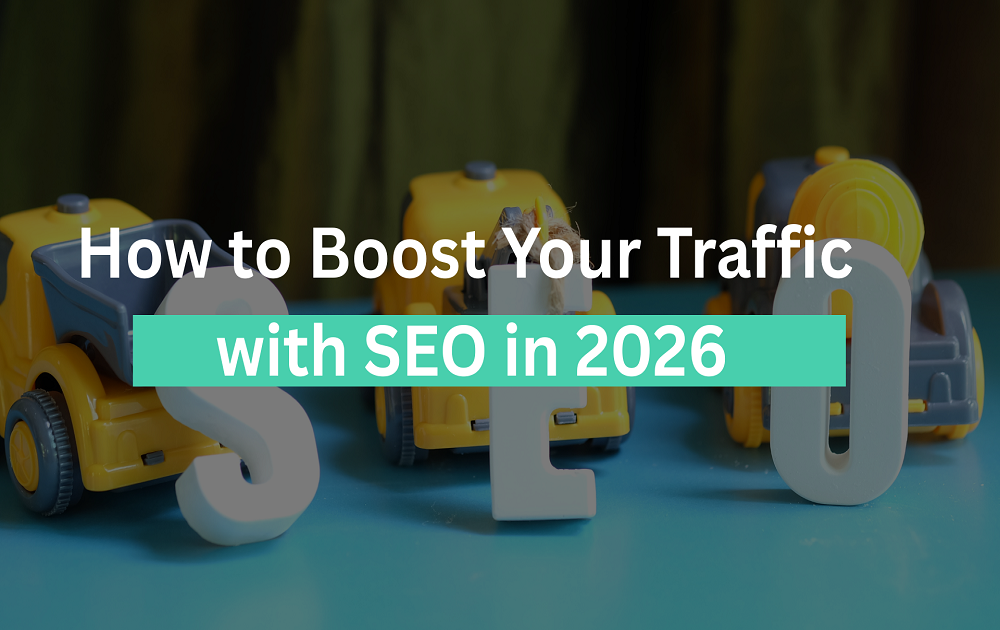In 2026, “search” no longer means ten blue links. With answer engines like Perplexity AI, information is synthesized in seconds, citations are surfaced instantly, and users expect conversational, context-aware guidance rather than a static results page. For marketing agencies, this isn’t a tweak to tactics. It’s a paradigm shift. It changes how content is planned, measured, and distributed; how brand authority is earned; and how creative and performance teams collaborate. At WDC, we see Perplexity not as an add-on channel but as a new nervous system for research, content, and decision-making.
From Search to Answers: Why Perplexity Matters in 2026
Perplexity fuses large language models with real-time web retrieval, producing concise, cited answers. That changes three fundamentals:
- Discovery: Users ask multi-intent questions and get synthesized answers plus sources. Rankings are replaced by inclusion and citation within an answer.
- Trust: E-E-A-T is operationalized. Answers show sources, so credible, technically sound, and experience-backed content earns visibility.
- Speed: Campaign insight cycles collapse. Teams move from week-long desk research to minutes-long synthesis with traceable sources.
For brands, this means getting “ranked” is now about being the source the engine wants to cite. For agencies like WDC, it means building Perplexity-readable authority and using the tool to compress research, strategy, and production timelines.
The New Content Playbook: From Keywords to Questions
Traditional SEO orbits around keywords and SERP features. Perplexity optimization centers on questions, claims, and citations:
- Question Graphs over Keyword Lists: Map the real questions buyers ask at each journey stage, including compound prompts like “best CRM for healthcare startups with HIPAA and SOC 2.”
- Claim-Backed Content: Each major claim needs a verifiable source, data point, or firsthand experience.
- Skimmable Evidence: Use tight summaries, bullet-proof data tables, and explicit takeaways that the engine can lift and cite.
- Schema and Clean Publishing: Rigid on-page structure (H1/H2 discipline, tables, lists, pull-quotes, alt text, canonical hygiene) helps answer engines parse and quote.
At WDC, our 2026 editorial framework includes a “Citeability Index” for every article—how likely a specific section is to be quoted by answer engines based on clarity, evidence density, and uniqueness.
AI-Native Research Workflows
Perplexity is not just a channel; it’s a research copilot that accelerates insight generation across the agency:
- Market scans in minutes with live sources and side-by-side comparisons.
- Competitor teardowns that track messaging shifts, pricing references, and feature claims—instantly linked to sources.
- Briefing packets that align strategy, creative, and media around shared evidence, not opinions.
- Rapid technical upskilling for teams via conversational deep dives with citations.
WDC embeds Perplexity in every project kickoff. Strategists run curated queries, export source lists, and create a source spine that editorial and creative must anchor to. This drastically reduces rework and strengthens E-E-A-T.
Performance Marketing in an Answer-First World
Paid teams feel the shift too. While classical PPC still matters, intent migrates to conversational surfaces:
- Answer-Engine Visibility (AEV): Track inclusion rate of your brand as a cited source for target queries.
- Snippet-Ready Assets: Produce concise, fact-rich explainer cards, calculators, and benchmark tables that engines prefer to pull.
- Conversational CTAs: Move from generic “Learn more” to question-mirrored CTAs like “Compare HIPAA vs SOC 2 controls.”
- Landing Pages Built for Summarization: Less fluff, more scannable evidence and clear conclusions. Think one problem, one verdict, one download.
WDC’s media playbooks now bundle “Answer Packs”—modular, citation-rich components designed to be referenced verbatim by engines like Perplexity.
Measurement: New KPIs Beyond Rankings
The metrics shift from positions to presence, precision, and persuasion:
- Citation Share: Percentage of target queries where your brand is cited.
- Answer Inclusion Depth: Whether you’re a passing mention or the primary evidence block.
- Attribution Bridges: Track assistive behaviors—users who viewed an answer citing you and later arrived via branded search, direct, or dark social.
- Evidence Velocity: Time from data generation (case study, benchmark, research) to published, citable artifact.
WDC dashboards in 2026 include AEV, Citation Share, and Evidence Velocity, stitched to CRM outcomes to tie answer-engine visibility to pipeline.
Creative: Designed to Be Quoted
Creative that wins in Perplexity is clean, clear, and quotable:
- Data-Dense Visuals with explicit captions and figure notes the model can read and paraphrase.
- Numbered Frameworks and stepwise guides that are easy to excerpt.
- Author Cards with credentials, awards, and practical experience to boost perceived expertise.
- Experience Signals: “We implemented this in 14 clinics over 9 months—here are the outcomes.” Firsthand experience beats generic advice.
WDC mandates a Quote-Ready Rule: every hero asset must contain three standalone, source-backed insights that can be cited independently.
Governance, Compliance, and Brand Safety
As answer engines surface your content directly, accuracy and compliance become reputational linchpins:
- Source Discipline: Maintain a vetted source library; annotate risk levels and licensing.
- Fact Audit Pass: Legal and SME sign-off before publication, with a changelog for future updates.
- Consent-Clear Case Studies: Ensure data used in evidence blocks has explicit permissions.
- Model Drift Monitoring: Re-query high-value answers monthly; if your citation drops, investigate content freshness and competitors’ new evidence.
WDC operates a Content Reliability Office—SMEs, legal, and data editors who harden claims and ensure perpetual freshness.
The Revenue Impact for Agencies and Brands
Embracing Perplexity reshapes economics:
- Research and ideation costs drop, reallocating budget to original research and creative.
- Content throughput rises, but so does quality, because evidence is centralized.
- Sales cycles shorten when buyers encounter your evidence and verdicts early in their search.
For WDC’s clients in 2026, the winning formula is consistent: ship original data, narrate it clearly, structure it for answers, and measure citation share like you once measured rank.
A Practical 90-Day Plan from WDC
- Audit: Identify top 100 buyer questions by journey stage; map current content to each.
- Gap-Fill: Produce 10 high-evidence “Answer Packs” with tables, benchmarks, and clear verdicts.
- Structure: Enforce clean headings, lists, alt text, schema, and author E-E-A-T.
- Instrumentation: Stand up AEV, Citation Share, and Evidence Velocity tracking.
- Enablement: Train teams on Perplexity research sprints and evidence hygiene.
- Original Research: Launch one lightweight study or dataset per quarter to earn defensible citations.
Conclusion
Perplexity marks a real break from the SERP era. In 2026, the brands that win will not be the loudest—they’ll be the most citable. Agencies must evolve from keyword mechanics to evidence architects, from campaign calendars to answer systems. WDC is built for this shift: we operationalize Perplexity across research, content, creative, and performance to earn citations, compress decision cycles, and convert answer-stage trust into pipeline. The question is no longer “How do we rank?” It’s “How do we become the source the world quotes?”
FAQs
What exactly is Perplexity in this context?
Perplexity is an answer engine that combines large language models with web retrieval to deliver concise, cited responses. For marketers, it’s both a channel to be cited in and a research tool to accelerate strategy.
How is “Perplexity SEO” different from traditional SEO?
Traditional SEO targets rankings on results pages. Perplexity optimization targets inclusion and citation within AI-generated answers, prioritizing clear structure, strong evidence, and E-E-A-T signals.
What types of content perform best in Perplexity?
Evidence-rich assets: benchmarks, checklists, implementation guides, case studies with outcomes, and data tables. These are easy to quote and verify.
Can paid media influence Perplexity visibility?
Indirectly. Paid can drive traffic to your most citable assets, boosting engagement and links, which strengthens authority. But inclusion is primarily earned through quality, clarity, and credibility.
How do we measure success if rankings don’t apply?
Use Citation Share, Answer-Engine Visibility, and Answer Inclusion Depth, then connect them to downstream metrics like demo requests and SQLs.
Will this replace Google SEO entirely?
No. It complements it. Many journeys still touch classic search. The advantage comes from orchestrating both—own the SERP where it matters and the answer box where decisions accelerate.
What does WDC specifically deliver for Perplexity readiness?
WDC implements question mapping, builds citable “Answer Packs,” installs new KPIs and dashboards, runs evidence governance, and trains your teams on AI-native research and production.
What’s the first step my brand should take?
Commission a Question Graph and Evidence Audit. Identify where you can produce original, verifiable insight fast. From there, prioritize assets most likely to be cited for high-value questions.




